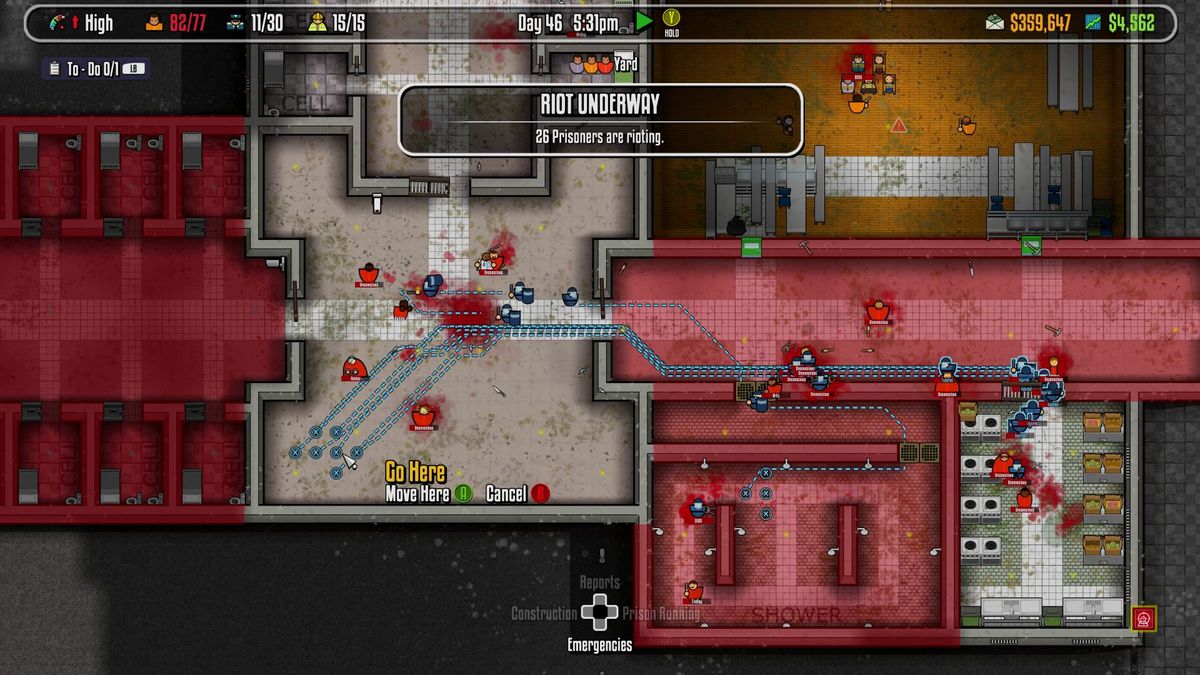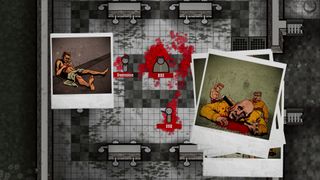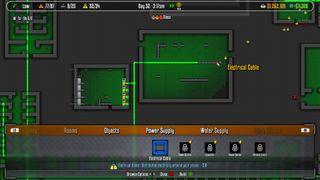Prison Architect review: A maximum security prison or luxury hotel?
Does the PC-ported game Prison Architect bring anything new to the stale genre of management simulators? I skeptically tried out the game and my experience may surprise you.

I've never been a massive fan of management simulators, personally finding games based on administration roles to be more of a chore than an enjoyable concept. Whether it's the repetitive nature of a top-down model or the barrage of useless information displayed on-screen; simulations presented in this style rarely show any form of personality.
On the surface, Prison Architect seemed to have similar downfalls, with a common concept and an unappealing cartoon art style. After laying the foundations for my first building, it was apparent Introversion Software had added unique personality to a recently stale genre.

Story
"Interwoven story and unique approach to issues within the prison system"
The most surprising aspect of Prison Architect is its carefully interwoven story and unique approach to issues within the prison system. From the outset, the game's narrative is used to characterize prison culture, while adding meaning to the events that occur in-game. The game isn't shy about approaching controversial subjects either, provoking inner conflict on the topic of capital punishment, the treatment of prisoners within the facility and the morality behind the prison system.
The game's tutorial starts off with this brutal tone, requiring you - the prison manager, to construct an execution chamber for an inmate on death row. After installing the electric chair and a cell nearby, you must call the offender forward to be put to death. This triggers a flashback of events, consisting of some annotated 'snapshots' that summarize the inmate's crimes. The first example outlines the man's graphic murder of his wife, founding cheating with another individual.

Up until the death of the inmate, dialogue between the priest and correctional officers discusses the morality of the existing law system. While this could've been animated through a simple death animation, these emotional stories force the player to consider their actions. The storyline is entirely linear and leaves no significant choices to the player, but still provokes thoughts I otherwise wouldn't have considered.
There's a sharp contrast between the game's joyful exterior and underlying tones, following subjects often left untouched by the industry. Looking past the game's adorable sprites and flowing animations, the ruthless characteristics of prison life are brought to light.

Gameplay
"Each aspect of the game plays a significant role in the overall stability of the prison"
Prison Architect is composed of a mixed system of logical mechanics, which interlink with surrounding world as a whole. Each aspect of the game plays a significant role in the overall stability of the prison, rendering this balance as vital from the outset. The game's mechanics can be split into four main sectors, each mapped to a separate button on the directional pad. These buttons are used to access the category menus quickly, to open up a wide range of options.
Get the Windows Central Newsletter
All the latest news, reviews, and guides for Windows and Xbox diehards.
The game's creative attributes, which surround the construction mechanics, allow players to build their own prison from the ground up. With a collection of easy-to-use tools, buildings can be laid upon foundations and filled with utilities of the player's choosing. Rooms can be assigned certain roles and when outfitted with the required objects, will seamlessly integrate into the prison ecosystem. While there isn't a hugely diverse range of materials to choose from, the placement of objects is entirely up to the player. The location of buildings can affect the overall flow and efficiency of the prison, but don't hugely influence the gameplay as a whole.

To keep the prison at an acceptable standard, staff can be hired and deployed at the player's choosing. A balanced rotation of staff is required to maintain the prison, ranging from security personnel to cooks and construction workers. As your prison scales, so should your workforce, with increased output and efficiency as more employees are assigned roles.
Without the right staff to uphold the prison's values, unrest amongst the prisoners can lead to widespread issues. Without satisfactory conditions, prisoners will begin to feel resentment and take a more radical stance towards the prison system. This effect can lead to general discontent or escalate towards the distribution of prohibited goods and violent riots within the premises. Installing new facilities to cope with the needs of prisoners can help prevent such issues, but can be costly in the long-term.

Failing to meet the needs of the prisoners will eventually lead to large-scale emergencies, which require help from outside services. In the event of a prison-wide revolt, riot police and armed officers can be deployed to deal with the disruptions. This changes the gameplay's pacing, allowing for control over each of the deployed squads. In a sense, this style of gameplay is reminiscent of turn-based strategy titles, giving power to tactically position enforcers.
"Prison Architect allows players to run prisons in their own unique way"
Without the game endorsing any particular approaches, Prison Architect allows players to run prisons in their unique way. Whether you treat prisoners fairly, and they accept the system or they're held back with brutal force, each method has the chance to succeed with the right assets in place.
These features come together to create a balanced ecosystem, which continues to evolve and grow as your prison expands. As problems are solved, new ones will arise, which soon progresses into a repeating cycle of changes. Despite a continuous flow of projects, these mechanics are rarely presented in a repetitive manner.

Performance
Prison Architect initially found its stride on the PC, attracting a substantial player base through Steam's 'Early Access' program. After a successful PC release during the later months of 2015, the game has had a long awaited debut on consoles.
While the title has made a near-seamless transition to Xbox One, Prison Architect's control scheme and user interface still show remnants of its optimization for the PC. Providing flawless controls for top-down titles has always proved to be a challenge on consoles, with a severe lack of real-time strategy games on the platforms. Prison Architect has suffered a similar fate, failing to deliver an intuitive control scheme for a controller.

These issues result in finicky and inflexible controls, which became apparent within my first few minutes of play. The mistakes I made often ate into my budget and soon became an annoyance during more complex tasks. Introversion Software has shown an effort to optimize the layout but left the control scheme in a marginally satisfactory state.
Conclusion
Prison Architect is an engaging experience, adding personality to a genre that's failed to evolve in years. Between a range of interlinking mechanics and ingeniously portrayed narrative, the game sits among the best management simulations on the Xbox One. While the game has its downfalls following a port from the PC, the game still performs amazingly on Microsoft's flagship console.
Pros:
- Complex, interconnected mechanics
- Engaging narrative which adds to the game's personality
Cons:
- Control scheme not optimized for a controller
Matt Brown was formerly a Windows Central's Senior Editor, Xbox & PC, at Future. Following over seven years of professional consumer technology and gaming coverage, he’s focused on the world of Microsoft's gaming efforts. You can follow him on Twitter @mattjbrown.
